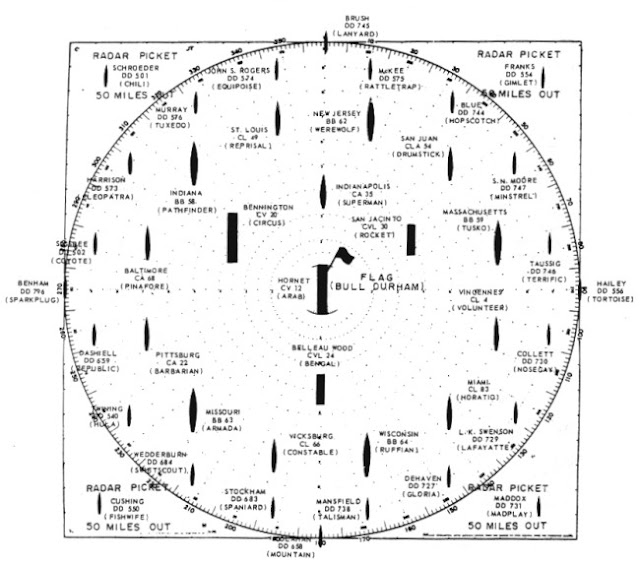USS Iowa plowing ahead on a new mission
Become a plank owner below
World War II saw the methods of sea control move from the barrel of a 16" main gun battery to the air and under the sea. The battleships before the new classes of North Carolina and South Dakota could not keep up with the fast carriers, and consumed too much fuel to be deployed to support the early landings in the South Pacific. The newer classes arrived in the Pacific in October 1942, where they found a new mission of providing a massive platform for anti-aircraft guns to help fend off attacking planes that threatened the carriers. The Battle of Santa Cruz Islands, October 26, 1942 saw the effect of what the anti-aircraft firepower of the new battleships could do to protect a carrier. The American Order of Battle was divided into two groups; the USS Hornet, protected by two heavy cruisers, two anti-aircraft cruisers, and six destroyers, with a combined firepower of 72 5" DP guns and numerous 1.1 anti-aircraft mounts. The USS Enterprise group was protected by the USS South Dakota, one heavy, and one light cruiser and 8 destroyers with an equal battery of 1.1 anti-aircraft barrels and added 40 MM barrels on the South Dakota. The results of the battle saw the Hornet sunk, and the Enterprise damaged but surviving the onslaught of over 100 Japanese planes, with the South Dakota credited with shooting down 26 of the attacking planes by putting up 890 rounds of 5", 4,000 of 40MM, 3,000 1.1 and 52,000 rds. of 20MM.
South Dakota firing on Japanese bomber Oct 26, 1942
flak from South Dakota and San Juan
USS South Dakota Oct 26, 1942
I am not one to second guess history, but the concentration of having such a robust anti-aircraft gun platform as the South Dakota, supported by the antiaircraft cruiser USS San Juan CL-54 seemed to be the deciding factor in the Enterprise surviving to fight again. The effect of the lesser armed destroyers, in the Enterprise group was impacted when the USS Porter which carried no effective 5" guns, was accidentally torpedoed and required the assistance of another destroyer to rescue her crew in the height of the battle which potentially removed five 5" barrels from the fight. One can only surmise what would have happened it the Enterprise had been lost, or had there been no fast battleships ready to answer the call on the night of November 14-15, 1942.
As the war progressed, the six fast battleships were joined by the new Iowa Class ships, along with the their older sisters, re-floated, and re-armed with scores of anti-aircraft guns that produced such a volume of fire that when used with the new proximity fuse shells, saw no further losses of battleships or fast carriers, with only the light carrier USS Princeton being sunk during the battle of Leyte Gulf. In a time before guidance systems like the AEGIS, the battleship was the last line of air defense during the horrific final months of the Pacific War.
The Iowa class battleships brought 10 twin barrel 5" mounts, 20 Quad 40 MM mounts, and 49, 20 MM guns, which concentrated to put a wall of steel in front of any attacking foe, as the flag plot below showing five battleships surrounding four carriers will illustrate.
The effect of these great ships was also felt as they turned their main batteries to soften up every invasion beach after Guadalcanal which will be the subject of future post.
But for now, I want to pause to invite anyone reading this who has not already done so; to considering parting with a few dollars and becoming a Plank Owner on the USS Iowa as she prepares for a new mission of becoming the host of an education center and museum , devoted to preserving our naval heritage and the memory of those who served their country so valiantly. To those of you who live close to San Pedro, or in the bay area, where she currently needs volunteers to assist in painting and restoring her vast deck, I would invite you to fill out a volunteer pledge application and lend a hand in something you can tell your grandchildren about.
So in the immortal words of US Marine SGT Dan Daly, lets see if we can all step it up and join the effort to make this the finest historical center on the world, devoted to our Naval heritage.










No comments:
Post a Comment